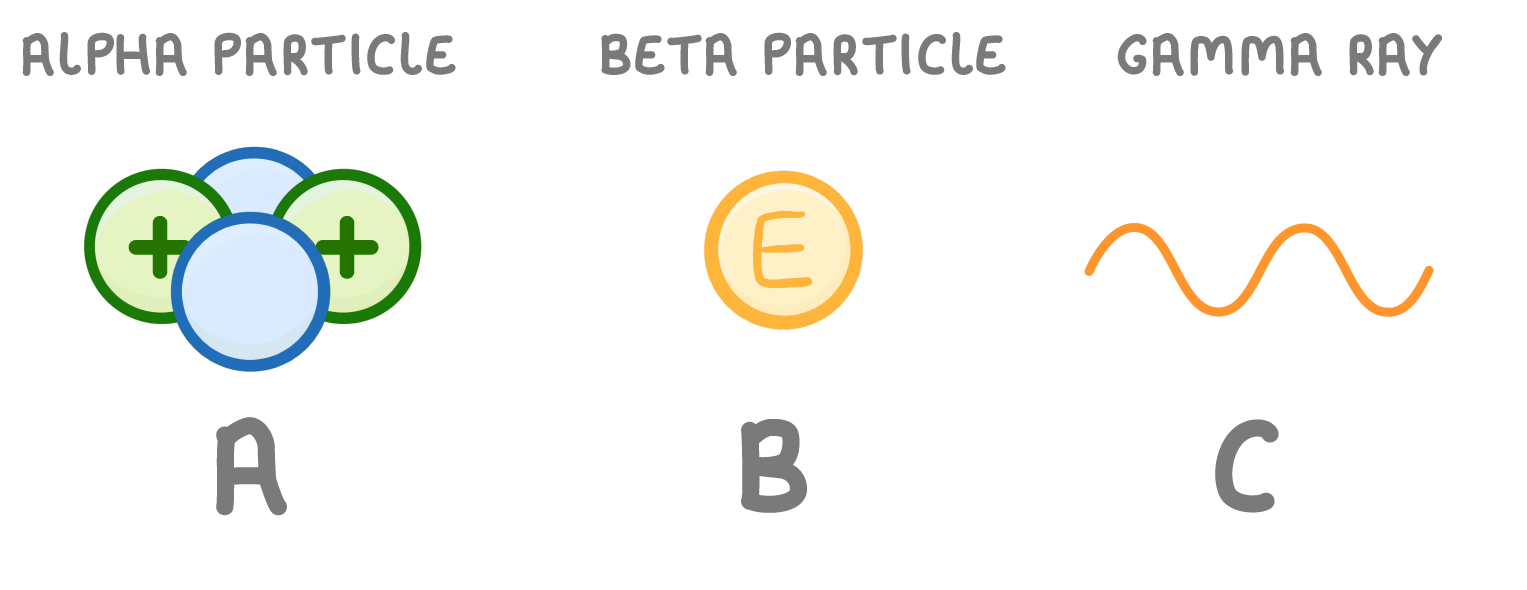Alpha, Beta and Gamma Radiation
This lesson covers:
- The four types of nuclear radiation: alpha particles, beta particles, gamma rays, and neutrons
- How ionising each type of radiation is
- How penetrating each type of radiation is
stable / unstable
A radioactive material has isotopes that can decay.
|
What does an alpha particle consist of?
(Select all that apply)
Electromagnetic radiation
Two electrons
Two protons
Two neutrons
|
hydrogen / helium / protons / electrons / +2 / -1
An alpha particle is the same as a nucleus. It has no , and has a charge of .
|
What does a beta particle consist of?
Electromagnetic radiation
One electron
One proton
One neutron
|
What does a gamma ray consist of?
One proton
Electromagnetic radiation
One electron
One neutron
|

Match the types of radiation A to C on the diagram above with the following descriptions:
No charge:
Positive charge:
Negative charge:
|
What causes the emission of a neutron?
An atom is heated to a high temperature
A nucleus has too many neutrons making it unstable
An atom is ionised
|

Match the types of radiation A to C on the diagram above with the following descriptions:
Cannot penetrate paper:
Can penetrate paper but cannot penetrate 5 mm of aluminium:
Can penetrate aluminium but cannot penetrate thick lead:
|
A beta particle is the same as an electron. What is the source of the beta particle?
An electron in the outer shell
A neutron decaying into a proton and an electron
An electron in the inner shell
|

Match the types of radiation A to C on the diagram above with the following descriptions:
Weakly ionising:
Moderately ionising:
Strongly ionising:
|